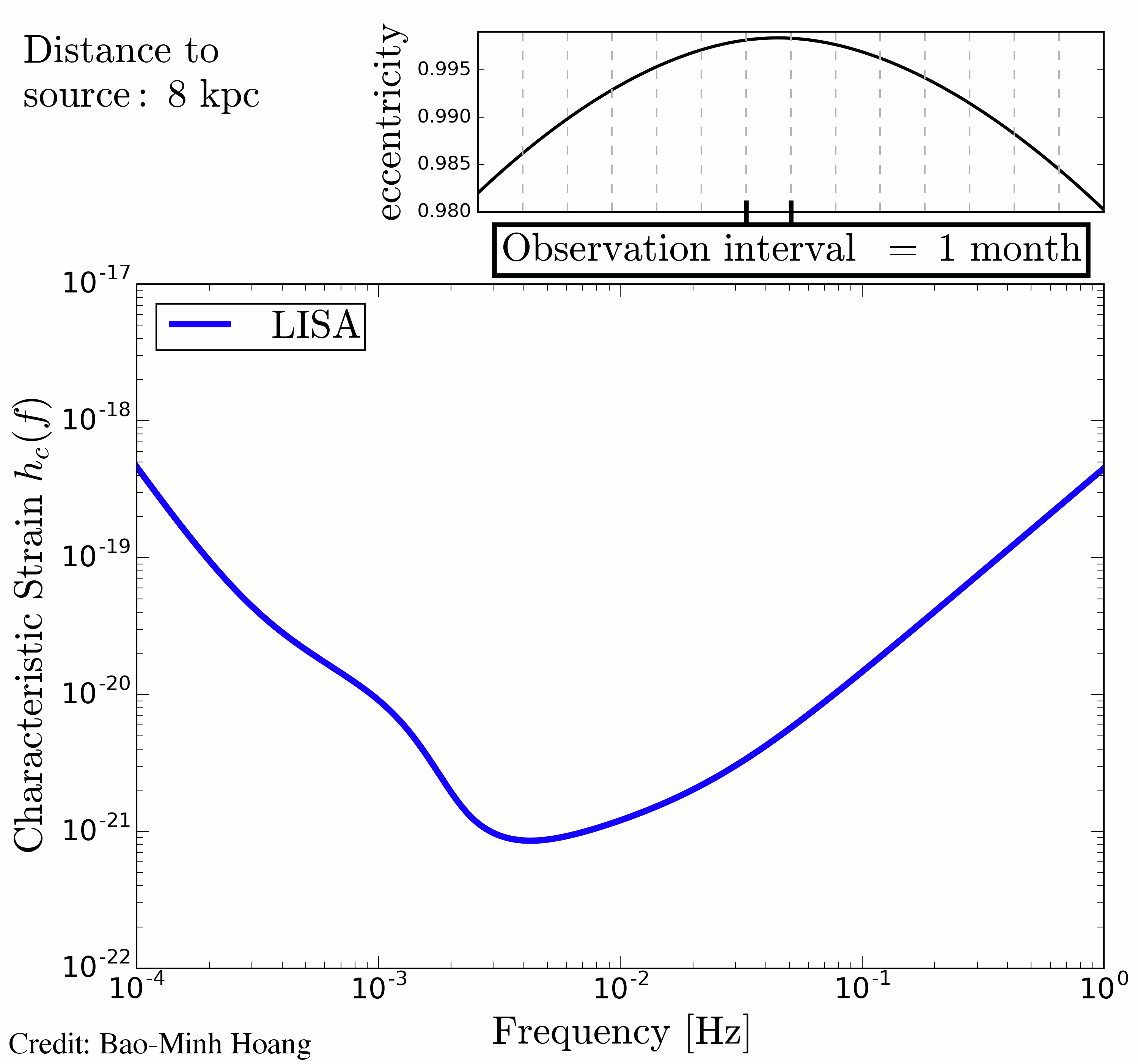Bao-Minh Hoang
Welcome! I am a sixth year graduate student at UCLA, working with Professor Smadar Naoz. Broadly, I am interested in the dynamics of black hole binaries, their interactions with their environment, and the implications for gravitational wave observations. So far, my work has focused on stellar-mass black hole binaries in the vicinicity of supermassive black holes, and the potential for observing these gravitational wave sources in LIGO and LISA.
Research
Binaries in Galactic Nuclei as Gravitational Wave Sources
The recent detection of merger black hole binaries (BHBs) and neutron star binaries by LIGO/Virgo have both answered and raised many questions. One of these questions concerns the astrophysical origin of the mergers that have been detected so far. The extrapolated rate of mergers is much higher than expected if isolated binary evolution alone were taken into account. This tension between expectation and observation has prompted a wide variety of studies exploring special mechanisms to explain the high LIGO/Virgo rates.
In Hoang et al. 2018, we explore one of these mechanisms — the Eccentric Kozai-Lidov effect — which causes a binary to undergo eccentricity oscillations due to gravitational perturbations from a tertiary companion (see Naoz 2016 for a review). Specifically, we studied BHBs in galactic nuclei undergoing eccentricity oscillations due to the influence of a supermassive black hole (SMBH). These BHBs can reach extreme eccentricities close to unity, which enhances the emission of gravitational waves and results in an increased rate of merger. We found that this mechanism can produce a merger rate comparable to other dynamical channels that have been proposed. One outstanding question is whether this mechanism can be disentangled from other channels of mergers, which we address in Hoang et al. 2019 and below.
This work was featured on Astrobites.
Detecting Binary Eccentricity Oscillations with LISA
 The future Laser Interferometer Space Antenna (LISA) is expected to observe gravitational waves in a wide range of frequencies from a wide range of astrophysical sources, including eccentric stellar-mass BHBs. This opens up the possibility of observing the eccentric BHBs orbiting around a SMBH described in the previous section. Furthermore, since these BHBs undergo eccentricity oscillations due to perturbations from the SMBH, detecting these eccentricity oscillations would disentangle these sources from other channels of gravitational wave mergers.
The future Laser Interferometer Space Antenna (LISA) is expected to observe gravitational waves in a wide range of frequencies from a wide range of astrophysical sources, including eccentric stellar-mass BHBs. This opens up the possibility of observing the eccentric BHBs orbiting around a SMBH described in the previous section. Furthermore, since these BHBs undergo eccentricity oscillations due to perturbations from the SMBH, detecting these eccentricity oscillations would disentangle these sources from other channels of gravitational wave mergers.
In Hoang et al. 2019 , we showed that not only are these BHBs visible in LISA for a significant fraction of their lifetime, but that the eccentricity oscillations they undergo can take place on a timescale that is much shorter than the LISA mission lifetime. By breaking the gravitation wave data stream into segments shorter than the total observing time, we can show that the eccentricity oscillation changes the average eccentricity of the BHB in each segment, and significantly changes the characteristic strain spectrum of the BHB over time. We show the time evolution of the characteristic strain of an example BHB due to eccentricity oscillation on the left. We have focused on stellar-mass BHBs around SMBHs in this work, but the methodology presented here can be easily generalized to a large range of triple systems, such as a BH-SMBH binary with a SMBH companion, or triples of any configuration involving neutron stars and white dwarfs. Figure : The eccentricity and characteristic strain evolution of a 30 M☉ - 20M☉ BHB orbiting a 4 million M☉ SMBH. The system is place in the Galactic Center at 8 kpc. The data stream has been broken into observing segments of 1 month to demonstrate the evolution of the characteristic strain spectrum.